17 Apr 2014
Do Nicotine Patches Work If You Are Pregnant?
Cigarette use during pregnancy is associated with a range of health problems that can lead to serious or severe complications before or after childbirth. For this reason, public health guidelines strongly urge women not to smoke while pregnant. In a study published in March 2014 in the journal BMJ (formerly known as the British Medical Journal), researchers from several French institutions sought to determine if nicotine replacement patches, one of the common options for smoking cessation treatment, produce any real-world benefit for pregnant smokers. These researchers concluded that nicotine patches don’t appear to work any better for pregnant women than placebo treatments.
Smoking During Pregnancy
 Statistics compiled by the Centers for Disease Control and Prevention indicate that slightly over half (54 percent) of all women smokers suspend their cigarette use while pregnant. Still, significant numbers of women continue to smoke during the early, middle or late stages of pregnancy or throughout all stages of pregnancy. Known harms of fetal exposure to the chemicals in cigarette smoke include heightened risks for a pregnancy-ending miscarriage, heightened risks for delivering a baby prematurely, heightened risks for delivering a baby lacking in sufficient body weight, heightened risks for delivering a baby affected by one of several specific birth defects and heightened risks for delivering a child who will eventually die from sudden infant death syndrome (SIDS). In addition to the problems associated with direct exposure to cigarette smoke, developing children also have increased chances of being born underweight when exposed to secondhand smoke.
Statistics compiled by the Centers for Disease Control and Prevention indicate that slightly over half (54 percent) of all women smokers suspend their cigarette use while pregnant. Still, significant numbers of women continue to smoke during the early, middle or late stages of pregnancy or throughout all stages of pregnancy. Known harms of fetal exposure to the chemicals in cigarette smoke include heightened risks for a pregnancy-ending miscarriage, heightened risks for delivering a baby prematurely, heightened risks for delivering a baby lacking in sufficient body weight, heightened risks for delivering a baby affected by one of several specific birth defects and heightened risks for delivering a child who will eventually die from sudden infant death syndrome (SIDS). In addition to the problems associated with direct exposure to cigarette smoke, developing children also have increased chances of being born underweight when exposed to secondhand smoke.
Nicotine Patches And Pregnancy
Like other nicotine replacement therapy products (such as gum, nasal sprays, inhalers and lozenges), nicotine patches produce their benefits by delivering preset, relatively small amounts of nicotine into the bloodstreams of people affected by nicotine addiction. These nicotine doses allow a person to curb his or her cigarette intake while avoiding the onset of the withdrawal symptoms that commonly afflict individuals trying to quit smoking and interfere with successful smoking cessation. Some smokers try to quit with the help of low-strength, non-prescription nicotine patches that are available at all sorts of commercial outlets throughout the U.S. Others rely on stronger nicotine patches that require a doctor’s prescription. In some cases, nicotine replacement therapy forms the entirety of a smoking cessation strategy. In other cases, nicotine replacement forms part of a larger approach that also includes some form of counseling, brief training or behavioral therapy training.
Effectiveness Of Nicotine Patches For Pregnant Women
In the study published in BMJ, the French research team used information gathered from 402 pregnant women to assess the effectiveness of nicotine patches as a deterrent to cigarette use. These women, all of whom were over the age of 18 and in the second trimester of pregnancy, came from 23 French hospitals and had a daily nicotine intake of five or more cigarettes. Half (203) of the study participants received nicotine patches, while the other half received placebo patches that mimicked the appearance of nicotine patches. Both groups continued to use their respective patches until they delivered their babies at the end of pregnancy.
The researchers used several criteria to compare the effectiveness of the nicotine patches to the placebo patches. The main criteria for each woman were successful abstention from cigarette use and the delivery of a child with normal birth weight. Secondary criteria included the overall number of women in each group who remained cigarette-free and the time it took for any given woman to relapse back into cigarette use.
Only 11 women in the nicotine patch group remained abstinent from cigarette use over the course of the study; a nearly identical number of women (10) in the placebo group also remained entirely cigarette-free. In both groups, the average woman relapsed back into cigarette use after a period of 15 days. In addition, when compared to the babies born to the women who used a placebo medication, the babies born to the women who received nicotine patches were, on average, only heavier at birth by about 1.8 ounces.
During part of the study published in BMJ, the researchers increased the nicotine patch doses until these doses reached or exceeded the amount of nicotine the women normally consumed while smoking. Even this increase in medically supplied nicotine did not improve smoking abstinence or delay the average time to smoking relapse. The study’s authors concluded that nicotine patches, in particular, do not appear to provide any benefit as a smoking deterrent to women during pregnancy. Pregnant smokers should discuss all possible treatment options with their doctors.
16 Apr 2014
Is Prescription Drug Misuse, Abuse?
Prescription drug abuse is a pressing concern in modern American society, where millions of adults and younger individuals take potentially addictive medications without proper authorization or for purely recreational purposes. However, not all people who abuse a prescription medication necessarily understand what they’re doing. In a study published in March 2014 in the journal Substance Abuse, researchers from New York University used a small-scale experiment to estimate how many people know what constitutes participation in prescription drug abuse.
Is Misusing Abusing?
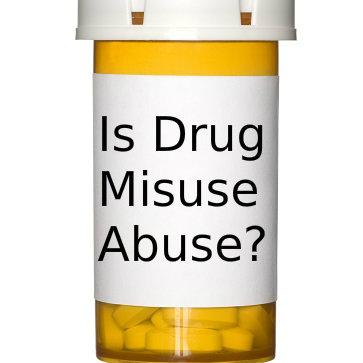 Prescription drug abuse is also sometimes known as the nonmedical use of prescription drugs. Technically, a person participates in this form of abuse whenever he or she knowingly takes his or her prescribed medication in a manner other than intended or knowingly takes a medication prescribed for someone else. However, some public health experts make a distinction between prescription drug abuse and prescription drug misuse. This distinction holds that abusers purposefully seek to obtain a nonmedical benefit from improper use of a medication, while misusers seek to obtain a medical benefit (such as pain relief) from improper medication use. In addition, public health officials typically distinguish between the abuse/misuse of medications that have no potential to trigger physical dependence and addiction, and the abuse/misuse of medications with an addictive potential.
Prescription drug abuse is also sometimes known as the nonmedical use of prescription drugs. Technically, a person participates in this form of abuse whenever he or she knowingly takes his or her prescribed medication in a manner other than intended or knowingly takes a medication prescribed for someone else. However, some public health experts make a distinction between prescription drug abuse and prescription drug misuse. This distinction holds that abusers purposefully seek to obtain a nonmedical benefit from improper use of a medication, while misusers seek to obtain a medical benefit (such as pain relief) from improper medication use. In addition, public health officials typically distinguish between the abuse/misuse of medications that have no potential to trigger physical dependence and addiction, and the abuse/misuse of medications with an addictive potential.
There are several reasons any given individual might start abusing/misusing a prescription medication. For example, some people mistakenly believe that since prescription medications come from doctors, they don’t pose a particular danger even when used in an unintended manner. Known risks of prescription medication abuse/misuse include the development of a diagnosable case of drug abuse or drug addiction (i.e., substance use disorder) and the onset of a nonfatal or fatal overdose.
Extent Of The Prescription Misuse Problem
The federal Substance Abuse and Mental Health Services Administration tracks year-to-year trends in prescription drug abuse through an annual project called the National Survey on Drug Use and Health. The most recent available figures from this survey, which cover part of 2011 and most of 2012, indicate that about 6.8 million American adults and teenagers abuse a mind-altering, potentially addictive medication in the average month. This number represents roughly 2.6 percent of the total adult and teen U.S. population. In descending order of popularity, the four classes of medications most commonly targeted for abuse are opioid painkillers, tranquilizers, stimulants and sedatives. Opioid painkiller abuse occurs far more often than any other form of prescription medication abuse.
How Many Understand The Definition Of Abuse?
In the study published in Substance Abuse, researchers from three branches of New York University (including the NYU School of Medicine and the NYU College of Nursing) used a small-scale assessment of 27 patients receiving treatment at a primary care clinic to estimate how many people understand the definition of prescription drug abuse (defined by the research team as nonmedical prescription drug use/prescription drug misuse). They began this assessment by asking each of the study participants to complete a brief questionnaire on the use/misuse of alcohol, tobacco, illegal/illicit drugs and prescription medications. In addition, the researchers used interviews to probe the answers each participant gave on his or her questionnaire. Six of the 27 patients had a recent history of prescription drug abuse/misuse, while another eight had a recent history of abusing an illegal/illicit substance.
The researchers found that all but one of the study participants understood what constitutes the use of an illegal or illicit drug. However, fully 41 percent of the participants inaccurately described what constitutes the abuse/misuse of prescription medications. The most frequently encountered inaccuracy was a failure to distinguish between medications with a potential for triggering problems with abuse and addiction, and medications that have no such potential. Interestingly, none of the study participants with a history of illegal/illicit drug use inaccurately understood the meaning of prescription drug abuse/misuse.
The authors of the study published in Substance Abuse concluded that many of the patients who discuss prescription drug abuse/misuse with their doctors may not understand the terms and definitions that doctors commonly employ. This tendency toward misunderstanding appears to be especially prominent in people who have no personal experience with illegal/illicit drug intake. Based on these findings, the study’s authors believe that primary care doctors who screen their patients for potential prescription drug abuse may inadvertently misidentify those patients as medication abusers in a significant number of cases. In line with this belief, they point toward a need to clarify the language used to explain prescription drug abuse/misuse to patients.
Read about The Effects Of Psychosis On Drug Misuse
Federal-level drug laws in the U.S. prohibit the sale or use of the plant-based, mind-altering drug marijuana. Despite this fact, as of 2014, the drug has been decriminalized or legalized in roughly a third of all U.S. states, and the trend toward decriminalization and/or legalization may continue in future years. In a study published in 2012 in the journal Drug and Alcohol Dependence, researchers from Columbia University investigated the question of whether decriminalization or legalization in all 50 U.S. states would lead to a rise in the diagnosis of cannabis use disorder (the combined term for cannabis abuse and cannabis addiction).
The Laws Of Marijuana
 The federal status of marijuana is mandated by a law called the Controlled Substances Act, which categorizes drugs and medications according to both their medical usefulness and their potential to trigger cases of substance abuse or substance addiction. Marijuana is classified as a Schedule 1 substance; substances with this designation officially have no verified usefulness in a medical context and come with substantial risks for abuse and addiction in all users. It’s important to note that federal law distinguishes marijuana from its main active ingredient, THC (tetrahydrocannabinol). In limited circumstances, doctors can use standardized THC products for such purposes as nausea control, pain relief and appetite encouragement. However, since the THC content of marijuana can vary widely, the allowance for THC use does not extend to marijuana use.
The federal status of marijuana is mandated by a law called the Controlled Substances Act, which categorizes drugs and medications according to both their medical usefulness and their potential to trigger cases of substance abuse or substance addiction. Marijuana is classified as a Schedule 1 substance; substances with this designation officially have no verified usefulness in a medical context and come with substantial risks for abuse and addiction in all users. It’s important to note that federal law distinguishes marijuana from its main active ingredient, THC (tetrahydrocannabinol). In limited circumstances, doctors can use standardized THC products for such purposes as nausea control, pain relief and appetite encouragement. However, since the THC content of marijuana can vary widely, the allowance for THC use does not extend to marijuana use.
Eighteen states in the U.S. (as well as the District of Columbia) have passed laws that make it possible to prescribe medical marijuana for their patients. Essentially, these laws decriminalize marijuana use in a medical context and take away the legal penalties otherwise associated with possession or consumption of the drug. In addition, both Colorado and Washington State have gone beyond decriminalization for medical marijuana and passed laws making it permissible for adults to possess and use small amounts of the drug in a recreational context not based on perceived medical need. These laws make marijuana use legal instead of merely decriminalized. However, in terms of ultimate jurisdiction, none of the state laws regarding medical marijuana or recreational marijuana take precedence over federal law.
Marijuana Abuse And Addiction
Like any other classic substance of abuse, marijuana produces rewarding sensations in the brain’s pleasure centers and, when used repeatedly, also makes long-term changes in brain chemistry that support the onset of physical dependence and addiction. According to figures compiled by the National Institute on Drug Abuse, one-quarter to one-half of all regular users of the drug will ultimately develop a cannabis addiction and meet the terms for diagnosing cannabis use disorder. Significant numbers of occasional marijuana users will also get addicted. As a rule, teenagers are substantially more susceptible to the drug’s addiction-promoting effects than adults.
A Rise In Abuse And Addiction Rates?
In the study published in Drug and Alcohol Dependence, the Columbia University researchers used information gathered from a large-scale, nationwide project called the National Epidemiologic Survey on Alcohol and Related Conditions (NESARC) to explore the issue of how the passage of medical marijuana laws in all U.S. states might impact rates for the diagnosis of cannabis abuse and cannabis addiction. After analyzing the information from NESARC, the researchers checked their findings against recent figures gathered from another nationwide project, called the National Survey on Drug Use and Health, which explores drug use trends in all American adults and teenagers.
Using the results gathered from the National Epidemiologic Survey on Alcohol and Related Conditions, the researchers concluded that, compared to people living in states that have not passed medical marijuana laws, people living in states that have decriminalized the use of medical marijuana are more likely to use marijuana, and also more likely to experience cannabis-related problems with abuse and addiction. Using the results gathered from the National Survey on Drug Use and Health, the researchers again concluded that people in pro-medical marijuana states use marijuana more often than people living in other states. However, neither survey indicated that the overall percentage of people affected by cannabis abuse and addiction is higher in medical marijuana states than in non-medical marijuana states. Instead, the number of affected individuals apparently goes up because the increase in total users leads to a larger pool of individuals at-risk for developing problems.
The authors of the study published in Drug and Alcohol Dependence did not offer a reason for the increase in marijuana users in states that allow medical marijuana. Since diagnosable problems appear in a certain percentage of all occasional and regular marijuana users, it seems logical to assert that a spread of medical marijuana throughout the U.S. and a subsequent increase in marijuana users would lead to increased numbers of cannabis use disorder diagnoses. However, continual future research will be needed to prove or disprove this assertion.
Read The Early Numbers Show Strong Marijuana Sales In Colorado
14 Apr 2014
Is The ‘War On Drugs’ Nearing The End?
It’s been more than 40 years since the “war on drugs” became a popular term across the United States. Yet, arguably, the U.S. has taken a combative approach to drug use for much longer than that, beginning with the passing of the Harrison Act in 1914. This war on drugs has involved the total prohibition of many drugs, and the criminalization of drug use and addiction. However, there have been signs in the last several years that the prohibition-and-penalty approach to curbing drug use is starting to fall out of favor.
The Harrison Act
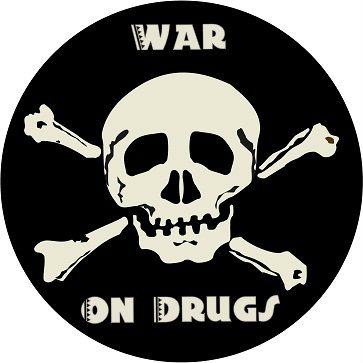 The Harrison Narcotics Tax Act of 1914 made it illegal to sell opiates or cocaine without a license. On the surface, the new law appeared to be about the moderate regulation and taxation of narcotics, rather than about outlawing them. However, the effect was to make it impossible to legally obtain cocaine or opiates. From this time on, drug users were forced to obtain their substance of choice on the black market.
The Harrison Narcotics Tax Act of 1914 made it illegal to sell opiates or cocaine without a license. On the surface, the new law appeared to be about the moderate regulation and taxation of narcotics, rather than about outlawing them. However, the effect was to make it impossible to legally obtain cocaine or opiates. From this time on, drug users were forced to obtain their substance of choice on the black market.
In theory, the language of the Harrison Act permitted doctors to prescribe narcotics. However, they were only permitted to prescribed narcotics “in the course of [their] professional practice,” which meant that they could only prescribe them to patients for treatment purposes. This language became key, because addiction was not seen as a disease at this time. As a result, prescribing narcotics to an addict was seen as illegal, because such a person was not ill.
Various other prohibition laws were passed in the succeeding years regulating substances like stimulants, steroids, hallucinogens and depressants. In 1970, all of these various laws were consolidated into a single piece of legislation that classified all legally controlled substances into various categories: the Comprehensive Drug Abuse Prevention and Control Act.
The Height Of The ‘War On Drugs’
When he created the Drug Enforcement Administration (DEA) in 1973, Richard Nixon declared “an all-out global war on the drug menace.” The phrase “war on drugs” caught on around the country and around the world as a result of this reference.
Heroin use increased rapidly in the 1960s and ’70s during the war in Vietnam, and public outcry against the drug became intense. Public pressure to curb illegal drug use, especially heroin, was at its height. There was a great deal of pressure on the government to do something to reduce drug use and the crime that was often associated with it.
The rise of the war on drugs was more than just the spreading of a catchy phrase. It marked a change in U.S. domestic policy away from treating addicts as patients and trying to solve the “root causes” of crime (such as poverty, racism, etc.) and toward a punitive approach to drug use that treated addicts as criminals. The Nixon Administration was one of the last presidential administrations to spend more money on the treatment and prevention of drug use than on the prosecution and incarceration of drug users.
In 1986, President Reagan signed the Anti-Drug Abuse Act, which created 29 mandatory minimum sentences for drug-related offenses. The percentage of the U.S. population in prison had hovered between 1 percent and2 percent since 1920, but jumped up to 8 percent between 1980 and 2008.
Signs Of A Shift In Drug Policy
Over the last two decades in particular, more and more prominent people and organizations have condemned the war approach to drug use as ineffective, expensive and unjustly punitive. Lately there have been signs that state and national policies are starting to concede to this viewpoint.
Two clear examples are the recent votes to legalize recreational marijuana in Colorado and Washington. Legal sales have begun in Colorado, and should begin in Washington by the end of 2014. Although marijuana remains a Schedule 1 controlled substance under federal law, the federal government has decided not to challenge marijuana sales in these two states. Furthermore, marijuana legalization is scheduled to appear on more state and city ballots around the country in upcoming elections.
Meanwhile, legislation on the federal level is starting to reduce the number of people in prison for drug offences. Many people hit by mandatory minimums or other harsh sentences have had their time in prison reduced by the current administration, and the United States Sentencing Commission is working to reduce even more sentences.
So far, these are relatively modest changes to the national drug policy. Nevertheless, critics of the war on drugs are encouraged by these signs that the prohibition and punishment approach that has dominated the way the U.S. combats drug abuse may finally be falling out of favor.
11 Apr 2014
How To Forgive Your Alcoholic Parent
Forgiveness, as the experts say, is a choice. If someone has wronged you, you cannot wait for forgiveness to appear. You must make a conscious decision to forgive. You also cannot wait for the person who wronged you to apologize. It may never happen. Forgiving someone is a personal choice and one that can give you many benefits. Researchers know that by actively forgiving, you can expect to experience less stress, better relationships, less depression, and even lower blood pressure and a lowered risk of substance abuse.
If the forgiveness you are considering means letting go of the harm and neglect you faced as a child because of a parent’s alcoholism, it will not be easy. Whether your alcoholic parent physically abused you, or simply was never there for you emotionally, you suffered greatly as a result. Forgiveness may be something you have considered, but are struggling to get through. With some understanding, compassion, and a suspension of resentment, you can forgive and move on with your life.
 The Harm Caused By An Alcoholic Parent
The Harm Caused By An Alcoholic Parent
The reason forgiving your mother or father is so difficult is that they caused so much damage in your life. When the children of alcoholics become adults they often experience their own struggles with substance abuse. You are also vulnerable to depression, you may have low self-esteem, and you probably struggle to maintain healthy relationships. If you were physically abused by your alcoholic parent, the repercussions may be more extreme.
Can You Learn To Understand An Alcoholic?
If you have managed to avoid having a substance abuse problem yourself, you may have a hard time understanding your alcoholic parent. However, your path to forgiveness may begin with compassion and understanding. Read up on the disease of alcoholism and try to learn why certain people are vulnerable to it and the impact it has. You may even want to talk to your mother or father about it. If he or she is willing to open up, you can learn just what the struggle has been like. Maybe your parent experienced abuse as a child. If you can understand the motivation behind your parent’s drinking, you may find the compassion to forgive.
Can You Let Go Of Resentments?
One of the biggest roadblocks to forgiveness is resentment. This ugly specter lives with you day in and day out. The more you think about how your alcoholic parent impacted your life in a negative way, the bigger this resentment becomes. It is a toxic feeling and will hinder you in everything you do. Even if you cannot yet forgive your parent, learn to let go of the resentment so that you can better function.
Remember The Good Times
Few alcoholic parents are so terrible that they never cared for their children at all. As you try to let go of resentment and attempt to cultivate compassion, think back to your childhood and try to remember the happy moments. Make a list of all the memories of a happy and caring parent. Remembering these moments and the feelings that accompanied them will help you to journey closer toward forgiveness.
Forgiveness is a choice, and it is a healthy one. Your life will only get better when you are able to forgive your parent. You will be able to rebuild a relationship and you will be able to let go of resentment. You will feel as if a weight has been lifted from your shoulders.
Find Out How Recovering Alcoholics Respond To Baclofen
The United States is awash in opioid painkillers with addiction rampant. Since 1999 prescriptions for opioids have tripled and the number of opioid-related deaths have quadrupled, with legally prescribed medications now accounting for 60 percent of drug overdoses. There are five million Americans currently addicted to opioids, and three out of four overdose fatalities are caused by opioids. So do we really need another opioid medication? Do the benefits outweigh the risks?
What Is Zohydro?
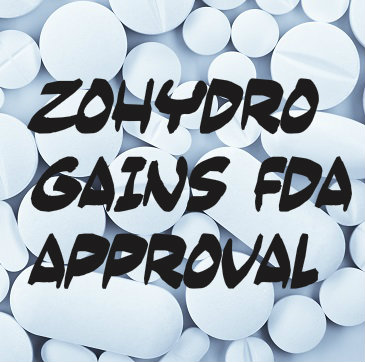 A new opioid called Zohydro, approved by the Food and Drug Administration (FDA) in late 2013, is Hydrocodone with an extended, 12 hour release formula. For comparison, the painkiller Vicodin is Hydrocodone with acetaminophen. Zohydro has no acetaminophen – it’s unadulterated Hydrocodone that has been described as five or 10 times stronger than Vicodin. A single tablet could kill a child, and two pills could be enough to kill an older person unaccustomed to opioids.
A new opioid called Zohydro, approved by the Food and Drug Administration (FDA) in late 2013, is Hydrocodone with an extended, 12 hour release formula. For comparison, the painkiller Vicodin is Hydrocodone with acetaminophen. Zohydro has no acetaminophen – it’s unadulterated Hydrocodone that has been described as five or 10 times stronger than Vicodin. A single tablet could kill a child, and two pills could be enough to kill an older person unaccustomed to opioids.
Additionally, the pills are not crush or addiction resistant. As the opioid epidemic grew, many manufacturers reformulated their pills in order to make them more difficult to abuse. One way to achieve this is to add certain ingredients to the pills which cause unpleasant side effects if they are crushed and snorted or injected. Those side effects are not present when the drugs are taken orally as prescribed. People addicted to opioids often snort or inject them in order to get a fast and intense high.
FDA Approval Of Zohydro
However, the FDA decided to approve Zohydro with none of these precautions in place. A loud outcry from doctors, congressmen, pharmacists, lawyers, addiction specialists and state Attorneys General followed. All of these and more have asked the FDA to reconsider its decision to approve the potent new drug. Add to the list the FDA’s own advisory panel which voted overwhelmingly (11-2) to withhold approval of Zohydro.
A group of experts has written a forceful letter to the FDA urging it to rethink its decision to approve Zohydro. The addiction risk is simply too overpowering, the experts explain.
A look at the benefits gained versus risks imposed lead experts to say this should be enough to halt the drug’s release. We already know it‘s impossible to keep drugs in the hands of pharmacists, physicians and legitimate patients. A certain amount will inevitably be diverted toward un-prescribed and illicit use. And that, in turn, will mean a surge in opioid addiction.
Experts agree that the more opioid pills available in the country, the greater the risks for addiction. So one would expect approval of new opioids to be very hard to come by, which is what makes the Zohydro case so very perplexing.
There is an already a climate of opioid abuse. Opioids without tamper-resistant formulas or addiction-resistant formulas are ripe for abuse. And important voices from every direction are crying “Stop!”
Read About Understanding Opioid Related Disorders
Smoking cessation messages are public health advertisements and campaigns designed to encourage current smokers to stop using cigarettes, which contain the addictive substance nicotine. Some of these ads and campaigns focus on the steps required to quit smoking, while others focus on the reasons for quitting smoking. In a study published in March 2014 in the American Journal of Health Promotion, a team of American researchers compared the effectiveness of “how-you-can-quit” smoking cessation messages to the effectiveness of “why-you-should-quit” messages as motivations for actually attempting to cease cigarette intake.
Get The Anti-Smoking Message
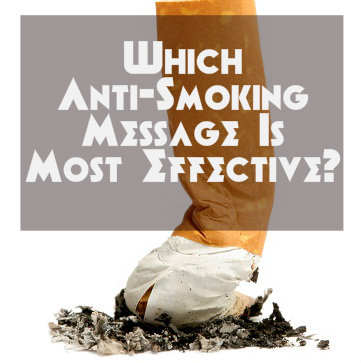 An agency inside the U.S. Department of Health and Human Services called the Substance Abuse and Mental Health Services Administration uses nationwide, annual survey information to track smoking rates among U.S. adults and teenagers. All told, about 22 percent of Americans in this broad age range smoke cigarettes each month. The peak smoking rate of 34.1 percent occurs among people between the ages of 21 and 25. People between the ages of 26 and 29 have a slightly lower smoking rate of 33.4 percent; in addition, close to a third (31.9 percent) of individuals between the ages of 30 and 34 smoke cigarettes. Three other segments of the population (people between the ages of 18 and 20, people between the ages of 35 and 39, and people between the ages of 45 and 49) also have a monthly smoking rate of over 25 percent. The monthly smoking rate drops below 20 percent only in adults age 60 or older and in children 17 and younger.
An agency inside the U.S. Department of Health and Human Services called the Substance Abuse and Mental Health Services Administration uses nationwide, annual survey information to track smoking rates among U.S. adults and teenagers. All told, about 22 percent of Americans in this broad age range smoke cigarettes each month. The peak smoking rate of 34.1 percent occurs among people between the ages of 21 and 25. People between the ages of 26 and 29 have a slightly lower smoking rate of 33.4 percent; in addition, close to a third (31.9 percent) of individuals between the ages of 30 and 34 smoke cigarettes. Three other segments of the population (people between the ages of 18 and 20, people between the ages of 35 and 39, and people between the ages of 45 and 49) also have a monthly smoking rate of over 25 percent. The monthly smoking rate drops below 20 percent only in adults age 60 or older and in children 17 and younger.
What Are Smoking Cessation Messages?
All smoking cessation messages have a target audience. In some cases, this audience is fairly broad and includes smokers from a range of backgrounds and segments of the population. In other cases, the target audience for a message is fairly narrow and includes only a single segment of the larger group of teen or adult smokers. In addition, some messages appear in isolation while others appear as part of larger, coordinated campaigns that continue for extended periods of time. Smoking cessation ads and campaigns can come from private institutions or from various levels of county, state or federal government. In addition, they can appear in a number of media settings, including TV, print or online outlets. Examples of recent campaigns undertaken on a national level include Tips from Former Smokers (from the Centers for Disease Control and Prevention) and Smokefree Teen (from the National Institutes of Health).
Which Anti-Smoking Messages Work?
In the study published in the American Journal of Health Promotion, researchers from an organization called RTI International used information gathered from 3,002 smokers age 18 or older to determine which smoking cessation messages have the greatest ability to foster quit attempts. The information-gathering sessions took place between late 2010 and early 2011; during these sessions, the study participants were exposed to two basic types of smoking cessation messages: those that focused on the ways in which smokers can halt cigarette use and those that focused on the real-world reasons for halting cigarette use. In turn, the “why-you-should-quit” messages were broken down into those that contained testimonials from other smokers and those that contained images demonstrating serious smoking-related health harms. Some participants viewed only one type of smoking cessation message, while others viewed various combinations of messages.
The researchers concluded that, compared to smokers who don’t view any smoking cessation messages, smokers who view only “why-you-should-quit” messages—or a combination of “why-you-should-quit” and “how-you-can-quit” messages—are significantly more likely to change their viewpoints on cigarette use and adopt a more pro-cessation outlook. They also concluded that, compared to smokers who don’t view any smoking cessation messages, most of the smokers who see “why-you-should-quit” messages are substantially more inclined to couple their change in smoking outlook with active attempts to halt their cigarette intake.
The authors of the study published in the American Journal of Health Promotion also concluded that, when viewed on their own, “how-you-can-quit” smoking cessation messages do not promote meaningful changes in smokers’ attitudes or an increase in smoking cessation attempts. Although they did not determine the long-term effects of exposure to “why-you-should-quit” messages, they believe that such messages may help promote ongoing cigarette abstinence. In addition, the study’s authors note that “how-you-can-quit” smoking cessation messages may not have their desired effect when used as a main technique for reaching smokers.
Read About How Stimulant And Smoking Addictions Can Be Treated Together
08 Apr 2014
Chronic Heroin Use Is On The Rise
Heroin is perhaps the most widely known opioid narcotic drug of abuse. In addition to opioid addiction, chronic users of this drug typically face a range of serious and potentially fatal health problems. In a report presented in March 2014 to the White House Office of National Drug Control Policy, a team of researchers from the RAND Corporation estimated how many people in the U.S. qualified as chronic heroin users in the years between 2000 and 2010. This report includes detailed information on the levels of drug intake found among chronic users.
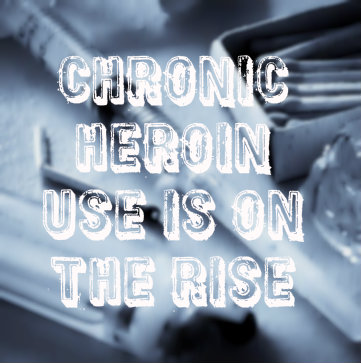 What Is Considered Chronic Use?
What Is Considered Chronic Use?
The federal Substance Abuse and Mental Health Services uses data from a yearly undertaking called the National Survey on Drug Use and Health to estimate how many Americans age 12 or older use heroin to any extent in the average month. The latest findings from this survey were released in the fall of 2013 and contain information compiled for most of 2012 and a short segment of 2011. According to these findings, roughly 335,000 adults and teenagers took heroin at least once in a representative 30-day timeframe. Altogether, about double that amount (669,000) took the drug at least once during the yearlong survey period. The figures for monthly heroin use were higher in 2012 than at any point since 2006. The figures for yearly use were higher in that year than for any year in the previous decade.
The Levels Of Chronic Heroin Use
Chronic drug use is a descriptive and useful but fairly imprecise term. Some chronic users may take a given drug four to 10 times a month, while others may have a more accelerated pattern of intake and take a drug 11 to 20 days per month. Still other chronic users may have heavily accelerated patterns of intake and take a given drug 21 days or more per month. As a rule, repeated use of an addictive substance is highly associated with chances for abusing that substance and developing the symptoms of drug addiction. For this reason, chronic users account for the vast majority of people directly affected by abuse- and addiction-related problems. Heroin is particularly noted for its potential to trigger abuse and addiction in repeated users. Users of the drug who develop these problems qualify for diagnosis of a condition officially known as opioid use disorder.
How Many Chronic Heroin Users Are There?
In the report presented to the White House Office of National Drug Control Policy, the RAND Corporation researchers calculated the number of chronic heroin users in the U.S. with information gathered from several highly regarded sources, including the federally sponsored National Survey on Drug Use and Health and Arrestee Drug Abuse Monitoring Program. This information covers the timeframe between the years 2000 and 2010. In 2010, the probable number of chronic heroin users hovered at about 1.5 million. Less likely numbers included a low estimate of 800,000 chronic users and a high estimate of 2.6 million chronic users. The number of chronic heroin users calculated by the RAND Corporation researchers is much higher than the total number of heroin users identified by the National Survey on Drug Use and Health. This is largely attributable to the researchers’ inclusion of information from the Arrestee Drug Abuse Monitoring Program, which covers a large pool of people (the arrested and the imprisoned) affected by an uncommonly high rate of substance use.
Roughly 300,000 of the individuals identified by the researchers as chronic heroin users took the drug four to 10 days per month. Another 200,000 identified individuals took the drug 11 to 20 days per month. Two-thirds (1 million) of those identified as chronic heroin users took the drug 21 days or more per month.
The authors of the report presented to the White House Office of National Drug Policy note that it’s fairly difficult to accurately estimate the number of people affected by chronic heroin use. This is due, in large part, to the problems involved in tracking the relatively small segment of the total population that takes the drug. On an important note, the data used by the report’s authors did not extend into 2011, 2012 and 2013. Figures from the National Survey on Drug Use point toward a sharp increase in overall heroin use during 2011 and 2012 (as of early 2014, figures for 2013 have not been released).
Find Out About Naloxone – A Potential Lifesaver For Heroin Addicts


